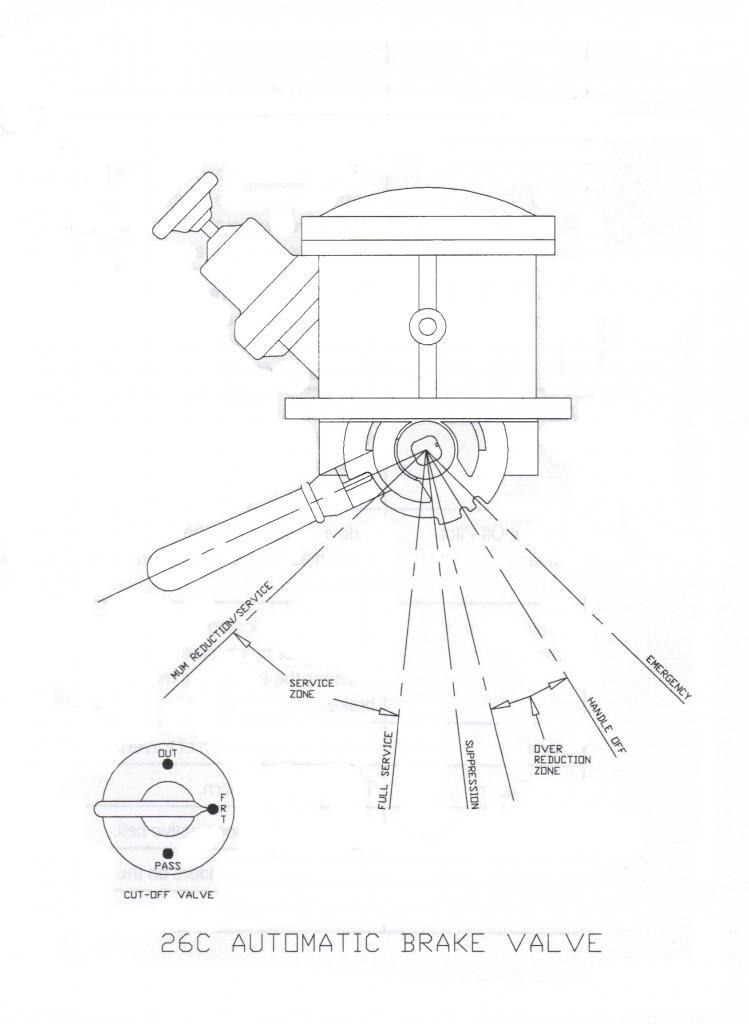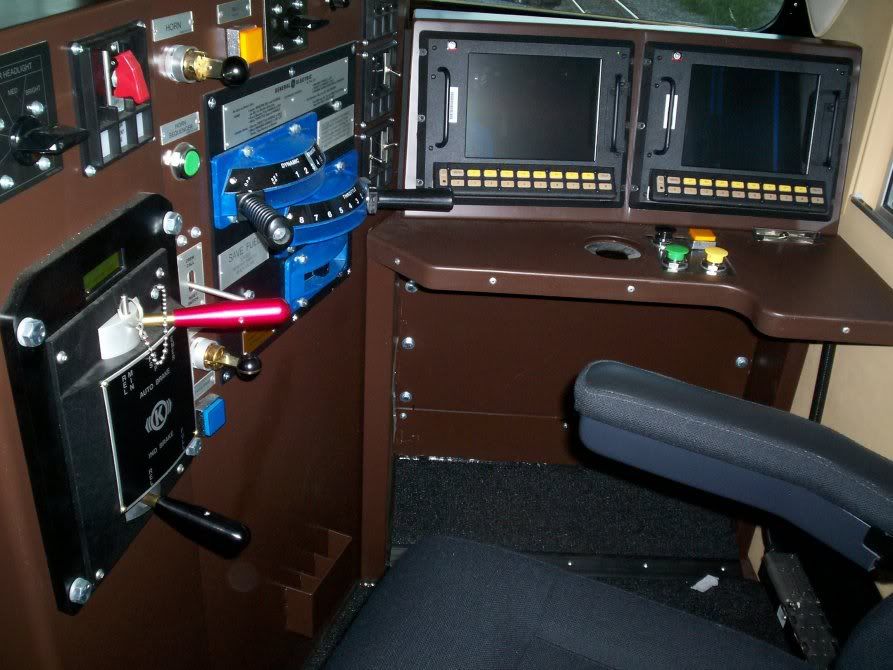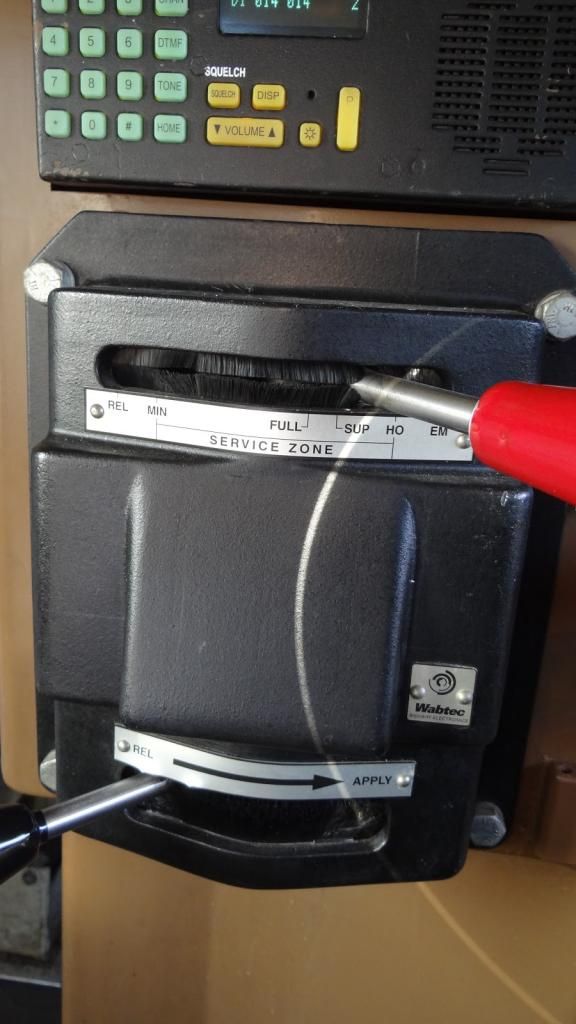The Automatic brake valve in Tales of the Jointed Track
- Sept. 14, 2014, 5:09 p.m.
- |
- Public
This is a part and an integral part of the engine or locomotive. The word engine means many things and is interchangeable. The engine, a locomotive, a unit, a motor..same thing. The Cab, the carbody, each end…different parts, but each unique. But from the outside view, its the BNSF 6137. Inside it is the same, but whats the set up? DP? or a regular head end power ? Desk top operation, or the newer standard control stand with the Electro-Pneumatic brake valve ? May be you have a consist of Geeps or SD’s with the 26-RL. All possible and you’d could change ends, and find a different brake valve . They all interface with each other, the “old’ vs the new… Trail is a default, so it takes commands from the active brake valve, automatic and independent.

This is a schematic looking down on the Quadrant of the 26-c or 26 RL Automatic brake valve. The zones in the valve are somewhat self explanatory, but there again, I worked with them every day so its old hat to me.
-
The handle is shown in release. The next is the minimum reduction. This sets a 6 to 8 lbs reduction off the pipe.
-
You cannot change that setting. This is basically called a light set off the pipe. Brake cylinder pressure on the FREIGHT CARS ONLY! is about 2 and 1/2 times the reduction so, you will get an 18 lbs to 24 lbs brake cylinder pressure on each car.
The service zone will allow you to go to 10 lbs to a full service. Full service is about 25 lbs. If you have a standard brake pipe at 90 lbs then go to full service, you”ll be between 68 to 65 on the train line. -
If you set any more other than an emergency application, you are wasting air. Why, because the brake pipe, the auxiliary reservoir and the brake cylinder reaches a point that is referred to equalization. The are all equal in pressure. Remember in a previous writing I said , the air brakes operate on the principle of air pressure opposing air pressure.
-
Suppression is used to recover a PCS ( Pneumatic Control Switch) and reset the brake valve after a Penalty application ( caused by not acknowledging an alerter signal in a timely manner, or an Over speed that is set on the speed recorder…ie over speed on an SD-40-2 was 70 mph..
-
Over reduction zone and handle off will drain the equalizing reservoir at a service rate.
-
Handle off is used to set the valve and ready it for trail or out.
-
Emergency is that EMERGENCY one initiated, you can’t change your mind.
-
Out-FRT(Freight)-Pass(passenger) sets the valves active operation.
-
The domed square above the drawing (actually sits behind) is the Equalizing reservoir.
-
The “knob” and off set and angled drawing is the regulating valve or “feed valve” . That sets the equalizing reservoir. 65 is yard service air pressure ( it is universally 90 now)..90 for freight service pressure 110 lbs for passenger service.

This is a “newer” Electro-Pneumatic automatic and independent set up. It’s still like the 26RL, but its controlled with magnet valves and interfaces with the air brake computer for lead operation or lead or remote DP set up. If you notice the “pin and chain” in the valve, this will not allow the handle to move. That way a loose engineer seat or some ones butt from placing the train in emergency inadvertently.

front view of the newer Electro-Pneumatic automatic and independent. Now look at it placed on a desk top. It is on on edge, and not setting in a desk top configuration

Handles are different due to a different railroads ordering but it is the same, laying flat, instead on edge. Whats that red button?, that’s the “bail feature” for the locomotives. On the BNSF, BN and Santa Fe. the bail was either bring the handle to the right or pull up on the ring below the knob.

you can see a major difference old vs new
Last updated September 14, 2014



Loading comments...